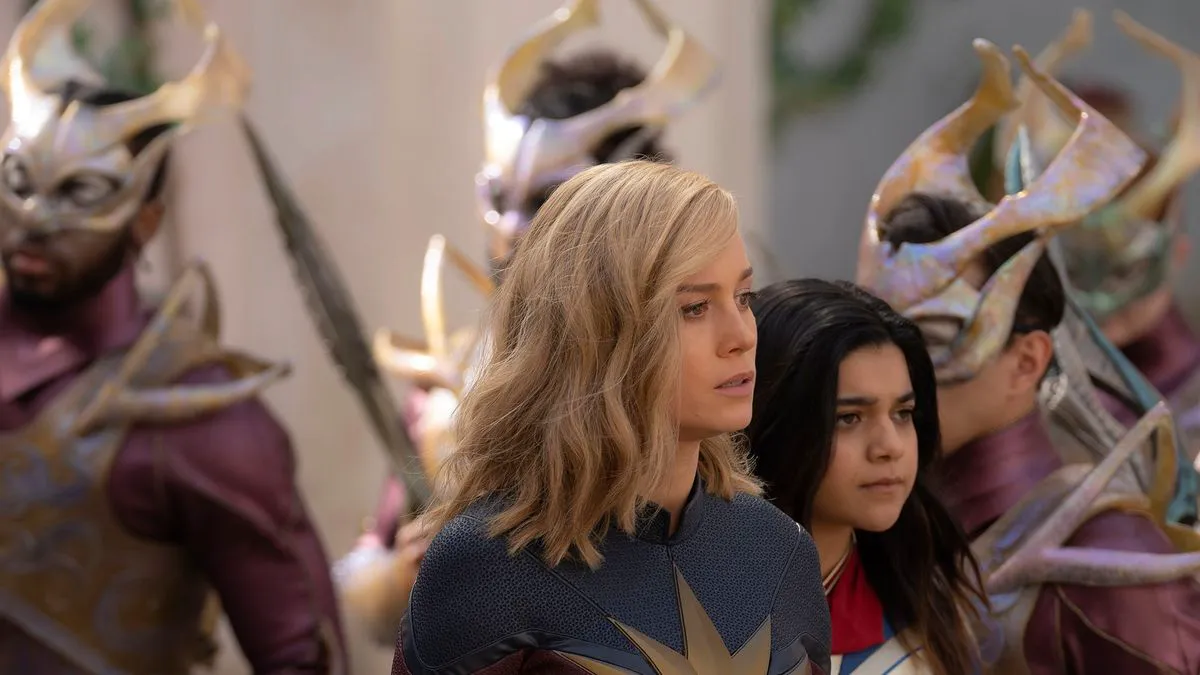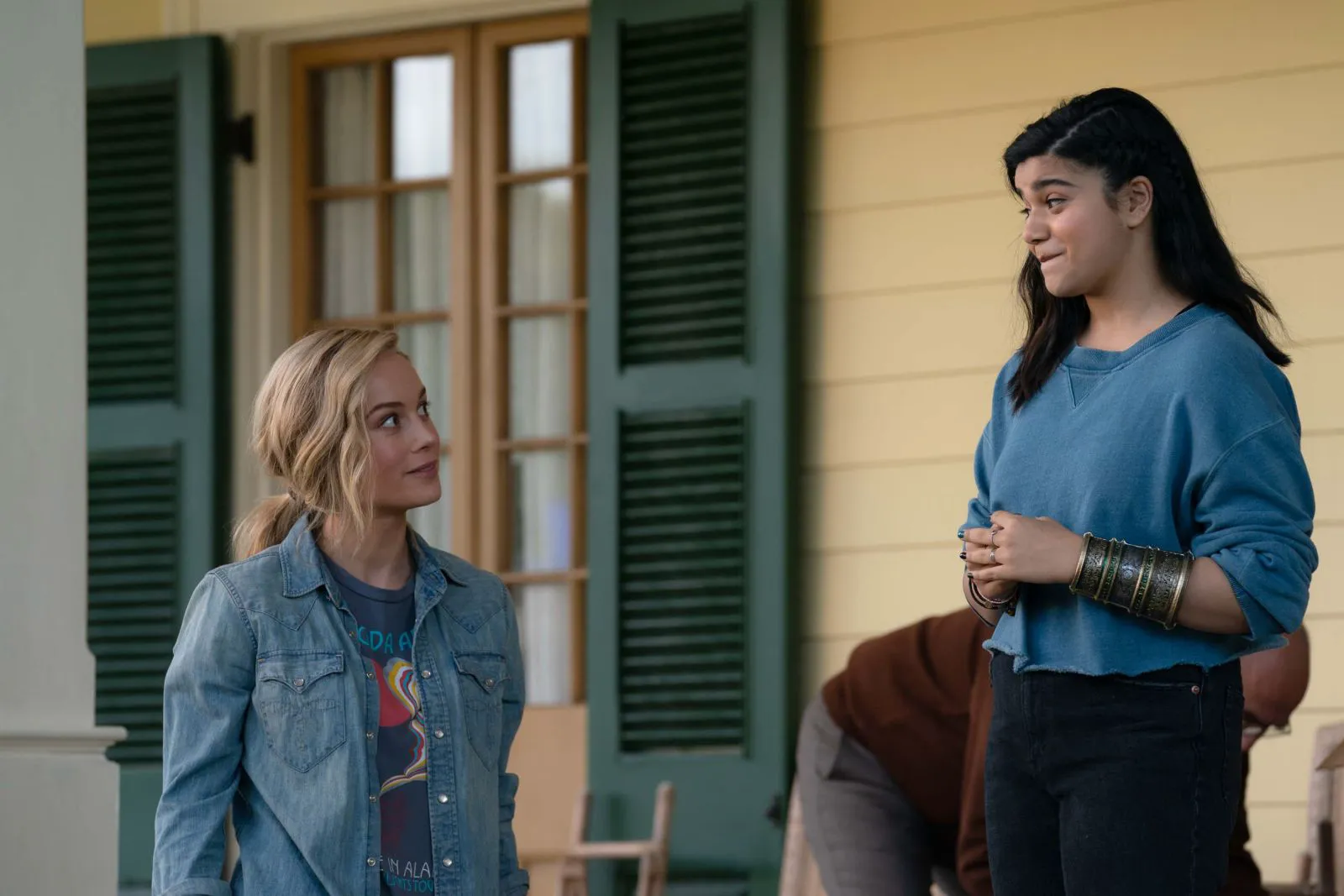Public fatigue with superhero blockbusters is reaching alarming levels. The new, ambitious crossover “The Marvels,” intended to be a highlight of the MCU’s Phase Five, has had one of the worst box office debuts in studio history, grossing only $47 million in its opening weekend (surpassing only “The Incredible Hulk” and the first “Ant-Man”). This is despite “The Marvels” being not just a sequel but a crossover that merges superhero series with the main franchise, introducing a range of new characters to the big screen. Essentially, Marvel is assembling a second “Avengers” team, currently composed predominantly of women, to align with current social trends. Unfortunately, this alignment with the zeitgeist has not benefited “The Marvels,” with Western press also giving the film a lukewarm reception. It seems that what was meant to be a new era for the MCU is unexpectedly turning into its twilight. “Captain Marvel 2” perfectly reflects the creative crisis the Mouse House is currently facing.

Brie Larson as Carol Danvers in a still from “The Marvels”
In the past, Carol Danvers (Brie Larson) destroys the Supreme Intelligence of the Kree planet Hala, leading to a civil war among the alien Kree race. The new Kree leader, Dar-Benn (Zawe Ashton), discovers one half of the Quantum Bands, which grants her the ability to manipulate energy, a power also possessed by Ms. Marvel, Kamala Khan (Iman Vellani). Dar-Benn intends to avenge Danvers and disrupt the fragile truce between humans and Skrulls. Meanwhile, Danvers discovers an invisible connection with Monica Rambeau (Teyonah Parris) and Kamala Khan. Each time they use their powers, the women literally switch places, causing considerable chaos. Teaming up, the superheroines decide to study their abilities and repel the threatening Dar-Benn.

Iman Vellani as Kamala Khan in a still from “The Marvels”
The Weight of Context
Understanding the events in “The Marvels” isn’t straightforward. Watching the film requires some homework: viewers need to recall the events of the first “Captain Marvel” and familiarize themselves with the mini-series featuring Monica Rambeau (“WandaVision”) and Kamala Khan (“Ms. Marvel”). Ideally, one shouldn’t miss “Secret Invasion,” which sheds light on the complex relationship between Nick Fury (Samuel L. Jackson) and the Skrulls, who arrived on Earth thirty years ago to live secretly among humans. Obviously, only the most dedicated Marvel fans will bother with such extensive context, and their numbers, as practice shows, are dwindling each year. Carol Danvers, intended by the producers to lead the new “Avengers,” isn’t beloved by the audience. The same can be said for Monica Rambeau, who mostly appears in the background in the previous phase. Those few who watched the “Ms. Marvel” mini-series may have been charmed by Kamala Khan, but in “The Marvels,” she’s relegated to the role of a jester, hardly a leader of opinion.

Zawe Ashton as Dar-Benn in a still from “The Marvels”
A Muddled Vision
It’s clear that Brie Larson’s star power alone isn’t enough, but “The Marvels” director Nia DaCosta (“Candyman”) doesn’t seem to be trying particularly hard. The involvement of independent directors like James Gunn and Taika Waititi once helped Marvel elevate the quality of its synthetic products, but the case of Chloé Zhao’s disastrous “Eternals” showed that not every creative mind can handle superhero scales and studio producer dictatorship. In an attempt to diversify the textbook plot of good versus evil, DaCosta turns to postmodernism, experimenting with artistic form, turning the film into a space opera or a Disney musical, but missing the mark each time. The only thing that unfailingly hits the mark in “The Marvels” is Goose. DaCosta uses the universal love for cats as a weapon of mass destruction and wins, but only for one scene.
Feminist Undertones?
It’s also difficult to perceive “The Marvels” as a feminist manifesto, even considering that the vast majority of characters are women. The “Avengers,” which DaCosta’s film desperately tries to emulate, always captivated audiences with its diverse team of superheroes who, despite all contradictions, remained a large and friendly family until the very end. In “The Marvels,” Carol, Monica, and Kamala have extremely similar abilities, varying only in the type of energy manipulation. Distinguishing one from the other isn’t easy, and it doesn’t dynamically enhance the film. DaCosta takes the metaphor of sisterhood too literally, smoothing out all the rough edges and trying to prove to the world that the only enemies of earthly women are alien women. Paradoxically, in an attempt to turn her characters into flawless fem-icons, DaCosta effectively sterilizes them, forgetting that the presence of many individualities always implies conflict, and the concept of an ideal woman is a byproduct of the toxic patriarchy she herself is fighting against.